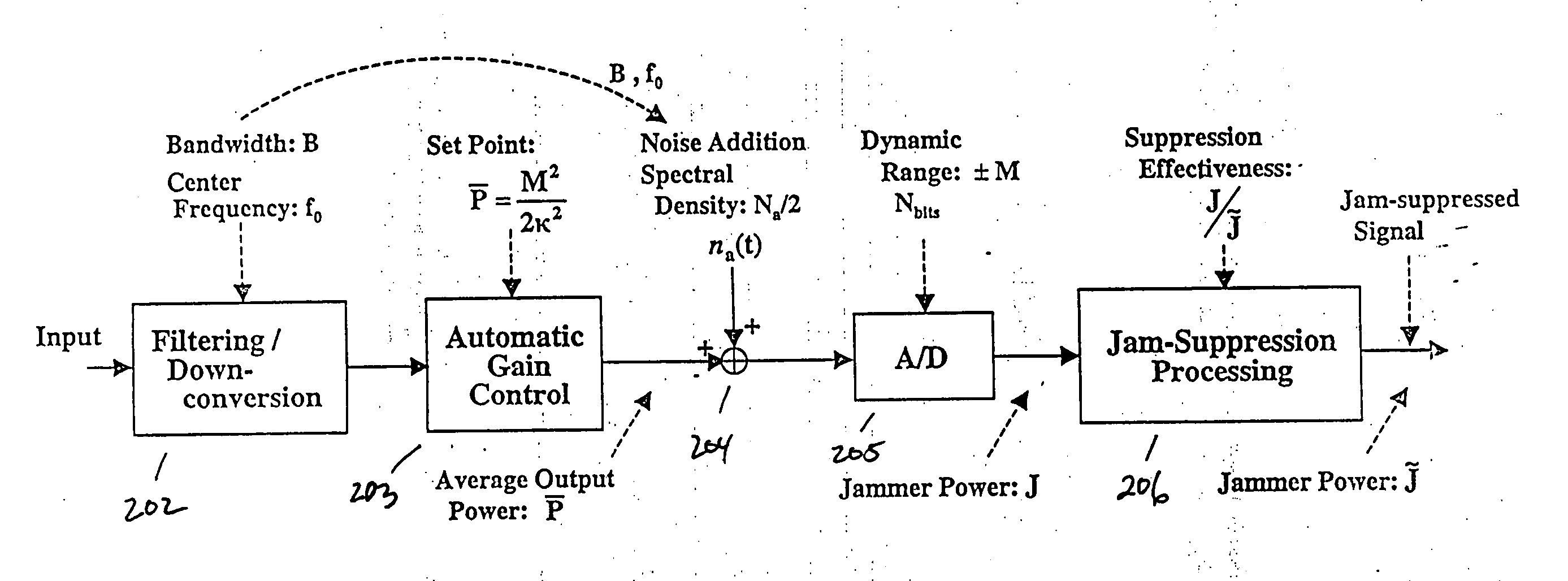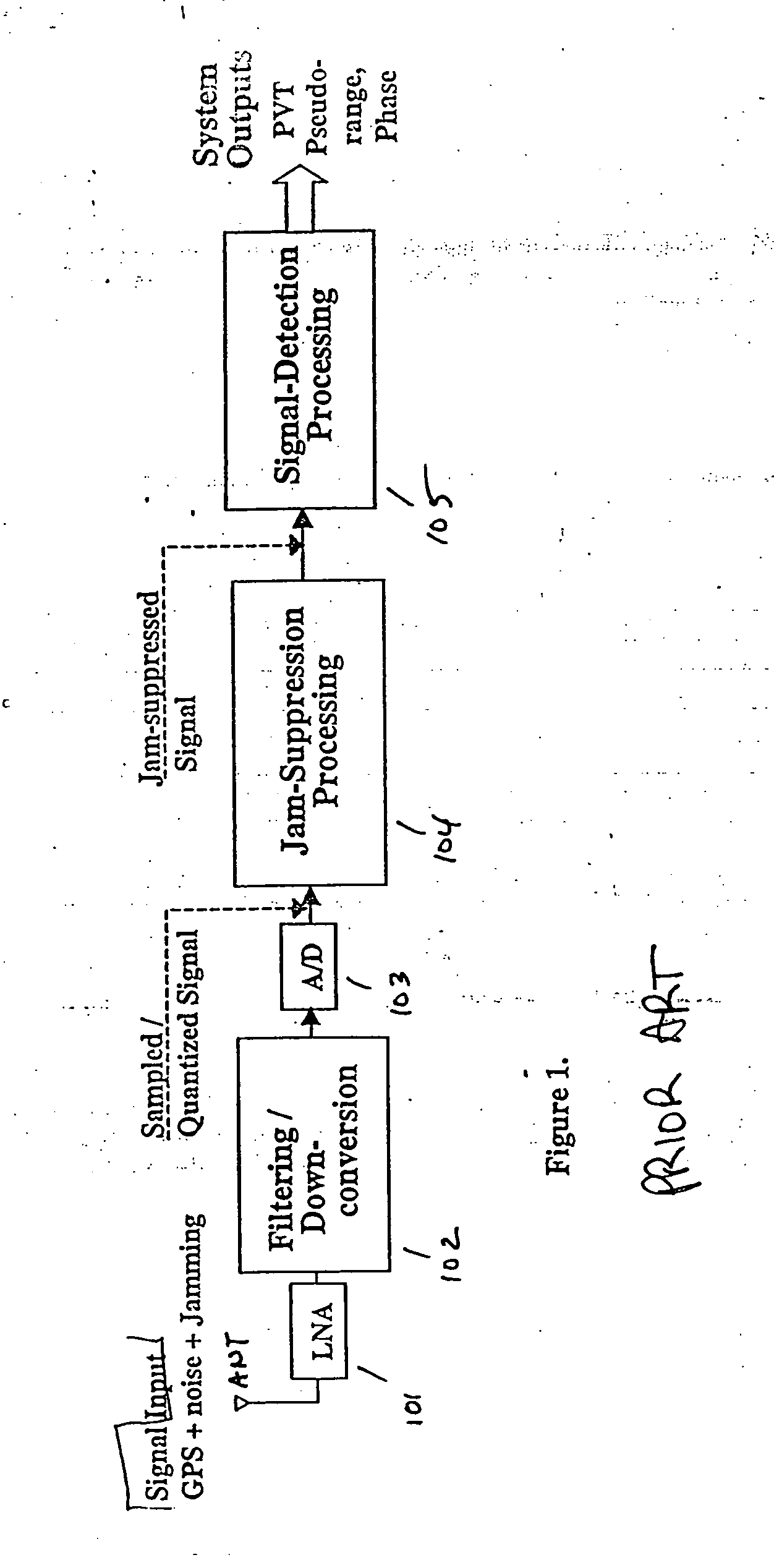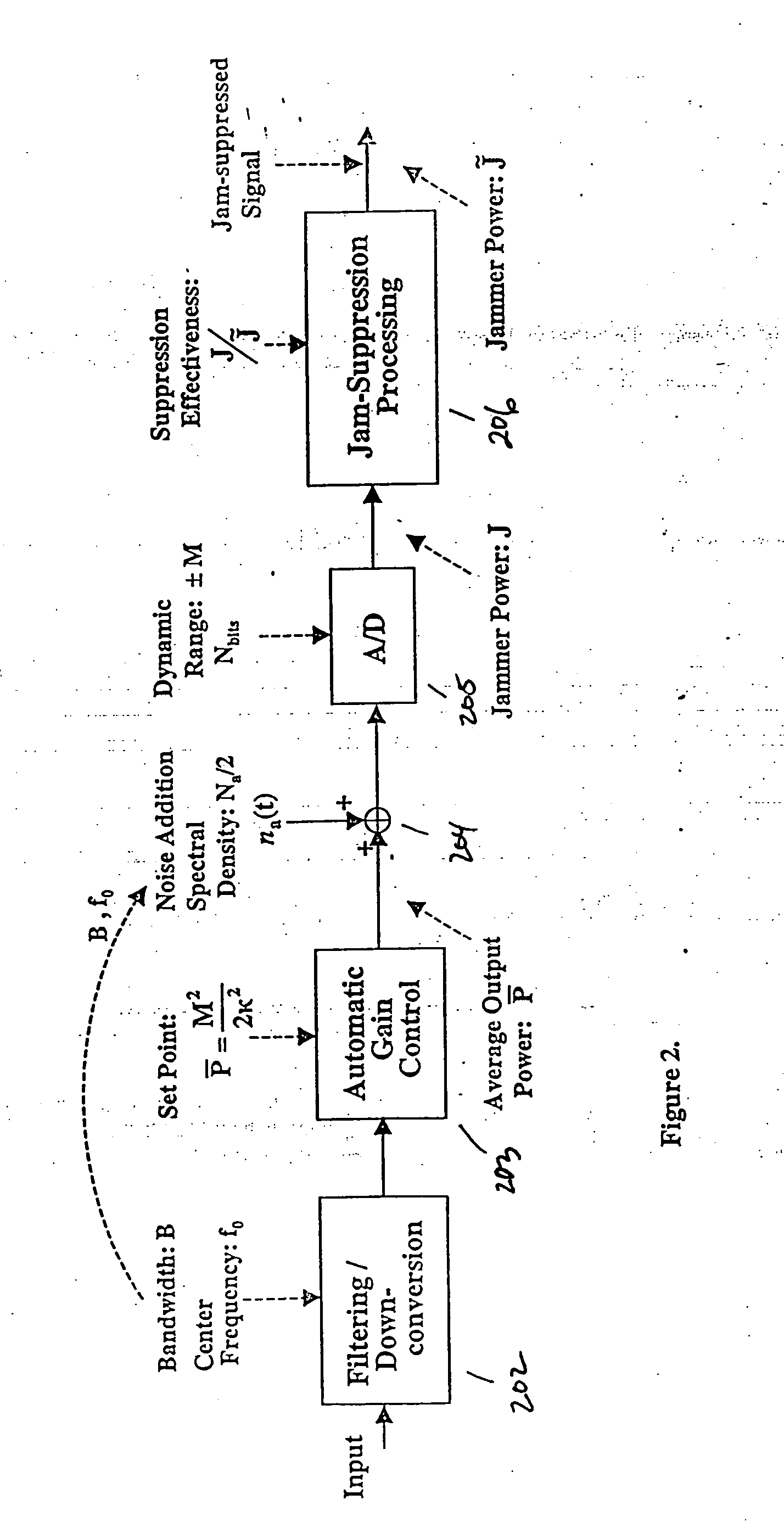Bit depth reduction for analog to digital conversion in global positioning system
a global positioning system and converter technology, applied in the direction of direction finders, radio wave direction/deviation determination systems, instruments, etc., can solve the problems of low signal strength, gps system to provide false and inaccurate positioning data, and adverse effects on gps signals, so as to reduce the requirement of bit depth. , the effect of reducing the requirement of a/d converter
- Summary
- Abstract
- Description
- Claims
- Application Information
AI Technical Summary
Benefits of technology
Problems solved by technology
Method used
Image
Examples
example i
[0043] As a first example, for the case where J / {tilde over (J)}=50 dB and K=2.628, the loss factor computed for Nbits=12 is 0.662 dB for narrow band, and 1.237 dB for wide band jammers. The numerically evaluated loss for the pure tone jammer is ˜3 dB. Identical wide and narrow band losses are achieved at Nbits=10 for J / {tilde over (J)}=38 dB, and at Nbits=8 for J / {tilde over (J)}=26 dB. For these cases, the loss factor attains its maximum value at a J / S power ratio ˜90 dB, 78 dB, and 66 dB, respectively. Beyond these limits, the loss factors are unaffected by further increases in jamming level. In particular, these loss values apply at the specified bit depths at the current military requirement of J / S power ratio=120 dB and beyond.
example ii
[0044] As another example, a baseline case expressing the capabilities of the system is the case where K=2.628, Nbits=12, J / {tilde over (J)}=50 dB, with σa=LSB. The narrow band jammer loss=0.662 dB for all jamming levels having a J / S power ratio of 90 dB and beyond (i.e. including 120 db), and is less for all jamming levels below 90 dB. The key point is that application of the system according to the present invention reduces the word length of the A / D converter 205 by 4-5 bits, which translates into a factor of 16 to 32 in resolution / linearity requirements, while only realizing a loss factor of ˜1.2 to 2 dB in the worst case. Application of the system thus represents a huge technology simplification for A / D converters in a GPS system.
example iii
[0045] In the case of a pure tone jammer, the jammer signal is represented by Equation B-1
J(t)=AJ cos(2πfJt+2J) (B-1).
The jammer power is represented by Equation B-2
J=AJ2 / 2 (B-2).
The full received input signal is the GPS signal plus noise n(t) plus the jammer signal J(t), and the objective is to keep the jammer from seizing control of the A / D converter. The input signal is represented by Equation B-3
r(t)=Ap(t)cos(2πfct+θs)+n(t)+J(t) (B-3)
where n(t) is band limited noise of spectral density No / 2 in the system passband.
[0046] A down-converter and low-pass filter of bandwidth B processes the input signal. The A / D converter operation occurs after down conversion and low-pass filtering. Multiplication by the local code and summation produces the I and Q summation values passed to subsequent processing. Determining the number of bits Nbits for the A / D converter proceeds as follows.
[0047] First quantizing to the noise level is required. Specifically, there will be quantities ...
PUM
 Login to View More
Login to View More Abstract
Description
Claims
Application Information
 Login to View More
Login to View More - R&D
- Intellectual Property
- Life Sciences
- Materials
- Tech Scout
- Unparalleled Data Quality
- Higher Quality Content
- 60% Fewer Hallucinations
Browse by: Latest US Patents, China's latest patents, Technical Efficacy Thesaurus, Application Domain, Technology Topic, Popular Technical Reports.
© 2025 PatSnap. All rights reserved.Legal|Privacy policy|Modern Slavery Act Transparency Statement|Sitemap|About US| Contact US: help@patsnap.com



